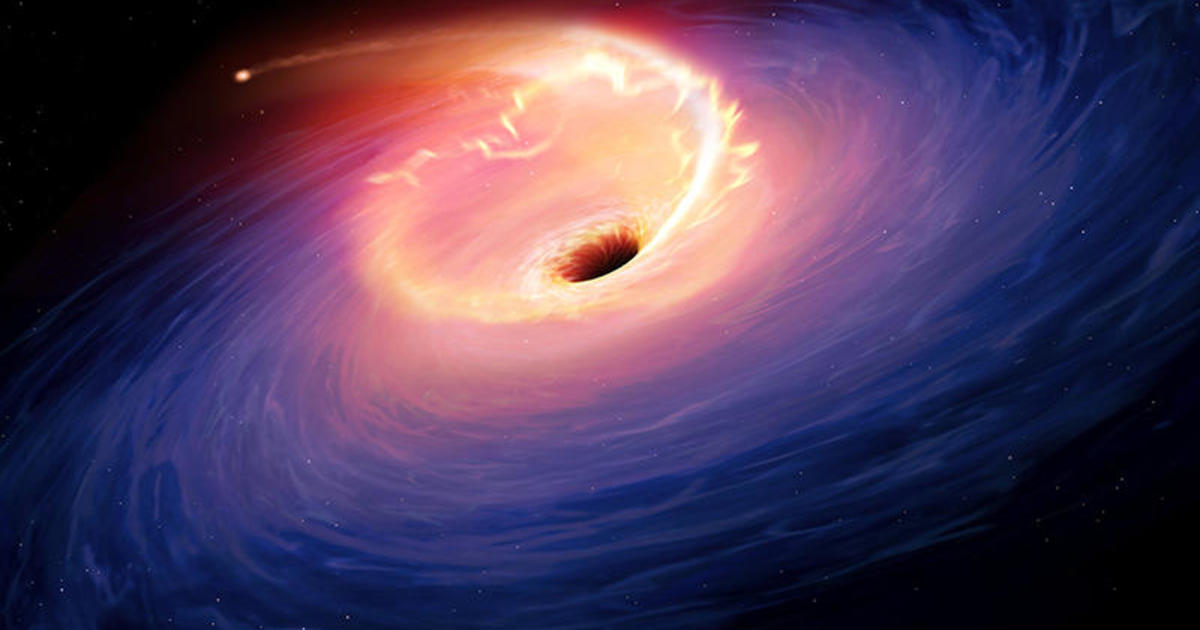[ad_1]
Astronomers have detected an impressive supermassive black hole devouring a star – and they’ve nicknamed it “Scary Barbie,” in part because of its terrifying power. Scientists called it one of the “most luminous, energetic, long-lasting transient objects” found lurking in a forgotten corner of the night sky.
Bhagya Subrayan, a Purdue University graduate student, said researchers believe the black hole “pulled in a star and ripped it apart,” in a brutal process called “spaghettification.” The object, documented in The Astrophysical Journal Letters, was assigned a random designation, ZTF20abrbeie, leading to the creation of its trendy nickname.
While the “outlier” death event lay undetected for years among other telescopic data, a Purdue lab’s artificial intelligence engine — the Recommender Engine For Intelligent Transient Tracking (REFITT) — helped uncover the “terrifying” anomaly.
Mark Garlick/Science Photo Library via Getty Images
REFITT “combs through millions of alerts” to help researchers find interesting phenomena in space — but for something hidden in plain sight, like Scary Barbie, the computer didn’t even have a “template” to look for it.
Researchers called the event “absurd.”
“If you take a typical supernova and multiply it a thousand times, we’re still not at how bright this is – and supernovas are among the most luminous objects in the sky,” said Danny Milisavljevic, an assistant professor of physics and astronomy. “This is the most energetic phenomenon I have ever encountered.”
A team of “supernova sleuths” found that Scary Barbie’s luminosity “exceeds any observed or theorized supernova,” leading them to classify the event as a tidal disruption, where material from a torn star is blown away by a black hole.
And just like Barbie slays a new job, Scary Barbie slayed the internet, spurring memes inspired by the movie template.
The star eater is described as transient, meaning it can appear, disappear or change dramatically over the span of just hours or days – rather than centuries or millennia. While the majority of transients last only weeks or months, this one has lasted for more than 800 days – and data show that it could be visible for several more years, a duration “unlike anything we’ve ever seen before,” Subrayan said.
The object is “still evolving,” according to the study, and researchers are hoping continued observation using NASA’s James Webb and Hubble Space Telescopes will eventually allow them to identify Barbie’s host galaxy.
“Discoveries like this really open our eyes to the fact that we are still uncovering mysteries and exploring wonders in the universe – things no one has ever seen before,” Milisavljevic said.
[ad_2]
Source link


